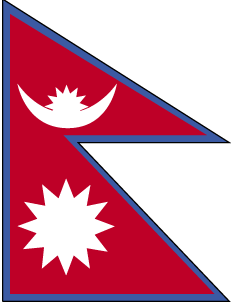
Nepal is among the poorest and least developed countries in the world, with about one-quarter of its population living below the poverty line. Nepal is heavily dependent on remittances, which amount to as much as 22-25% of GDP. Agriculture is the mainstay of the economy, providing a livelihood for more than 70% of the population and accounting for a little over one-third of GDP. Industrial activity mainly involves the processing of agricultural products, including pulses, jute, sugarcane, tobacco, and grain. Nepal has considerable scope for exploiting its potential in hydropower, with an estimated 42,000 MW of commercially feasible capacity, but political uncertainty and a difficult business climate have hampered foreign investment. Additional challenges to Nepal's growth include its landlocked geographic location, persistent power shortages, underdeveloped transportation infrastructure, civil strife and labor unrest, and its susceptibility to natural disaster. The lack of political consensus in the past several years has delayed national budgets and prevented much-needed economic reform, although the government passed a full budget in 2013.
$42.06 billion (2013 est.)
country comparison to the world: 104
$40.57 billion (2012 est.)
$38.7 billion (2011 est.)
3.6% (2013 est.)
country comparison to the world: 90
4.9% (2012 est.)
3.4% (2011 est.)
$1,500 (2013 est.)
country comparison to the world: 205
$1,500 (2012 est.)
$1,400 (2011 est.)
agriculture: 36.8%
industry: 14.5%
services: 48.7% (2013 est.)
25.2% (2011 est.)
NA% (2013 est.)
9.5% (2012 est.)
16 million
country comparison to the world: 39
note: severe lack of skilled labor (2011 est.)
agriculture: 75%
industry: 7%
services: 18% (2010 est.)
46% (2008 est.)
country comparison to the world: 194 42% (2004 est.)
tourism, carpets, textiles; small rice, jute, sugar, and oilseed mills; cigarettes, cement and brick production
1.5% (2013 est.)
country comparison to the world: 136